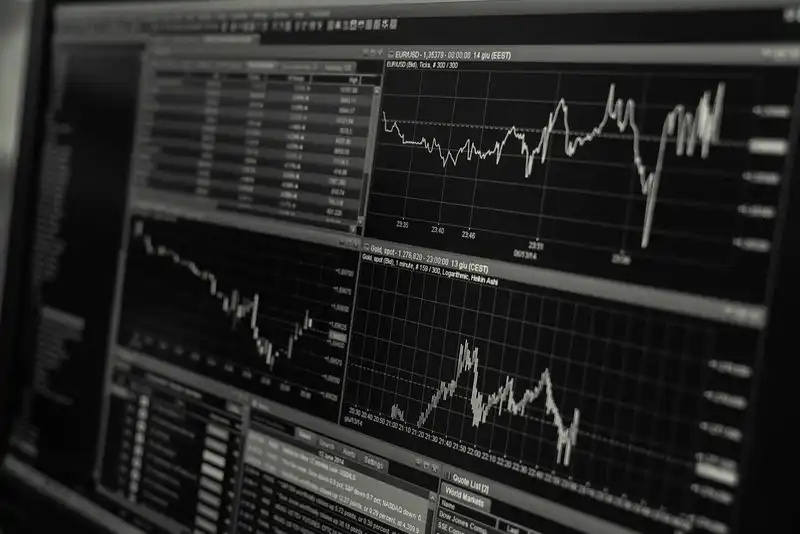Why Choose a Remote Temperature Monitor?

What They Are
Food industry professionals use remote temperature monitoring to ascertain if a food product has become contaminated by bacteria and is therefore unsafe for consumption.
Whether cooking, preparing, holding, or transporting food, food industry professionals must vigilantly oversee temperatures in order to provide the highest quality and safest products possible to their customers.
Remote temperature monitors allow food industry professionals the ability to remotely track and record proper temperatures from anywhere with a wifi connection.
When so many foods are derived from the same sources, it is especially important to monitor the temperature throughout the entire food supply chain.
A food outbreak could bring massive financial consequences to your business via lawsuits, fines, penalties, and even permanent closure of your business. Many major violations and foodborne illness outbreaks could have been prevented using a wireless monitor system.
How They Help

Proper monitoring of temperature is a pillar of food safety etiquette necessary for preventing food outbreaks and safety concerns. Shockingly, less than 5% of companies in the hospitality and restaurant industries use a temperature monitoring system Four key benefits to implementing a temperature monitoring system include-
-food safety improvement
-product loss reduction
-human error reduction
-staff notification of equipment failure and downtime reduction.
Temperature and humidity sensors ensure equipment is working properly by consistently monitoring the device's temperature range. Internet of Things (IoT) products incorporated into wireless temperature monitoring systems allow the ability to remote monitor wifi temperature.
Employees receive alerts to any temperature range issues that could create food safety risks. They can then perform the necessary corrective actions, preventing foodborne illness and unnecessary food waste.
Food industry professionals can reduce food waste and product loss by properly monitoring their cold storage wifi temperature.
Wifi temperature monitoring ensures the temperature accuracy of equipment and products around the clock. Temperature and humidity sensors send alerts for equipment failures that occur outside of working hours, including between shifts or overnight.
85% of restaurant food safety and product loss issues involve temperature or time controls. Digital monitors will send alerts to staff for any breach in the system, allowing staff to undertake appropriate corrective actions. Through the implementation of a digital monitoring system, restaurants can eliminate expensive food waste and improve their bottom line.
Many common human errors can be eliminated through remote temperature monitoring. Mistakes happen, perhaps a staff member forgot to monitor the temperature of the walk-in fridge, an employee failed to take an accurate reading, or a customer inadvertently left the walk-in cooler door open.
Though not intentional, these mistakes can be catastrophic, both in terms of expensive product waste and dangerous food outbreaks.
Digital monitoring can send alerts to staff, notifying them of equipment failure, and reducing downtime. Failure to immediately notice equipment failure can slow down service time and limit what menu items will be available for purchase.
For example, when closing up the restaurant, an employee could not notice a malfunction in the walk-in cooler power source or there may be a power outage overnight. After this food has spent so much time in the danger zone it could cause serious foodborne illness. Now the product must be disposed of, resulting in food shortages for the next shift.
Digital temperature sensors will send alerts in real-time, allowing a rapid corrective response. With the proper digital monitoring system, food industry professionals can save product and money while increasing both the safety and satisfaction of their customers.
Maintaining Compliance
The benefits of proactive implementation of wireless monitor systems include-
- easier information collection
- comprehensive historical data
- compliance assistance
- help to identify dangers
- reduction of the potential for human error.
There are many remote temperature smart tools available to incorporate into food monitoring systems. Wireless temperature sensors allow a remote line of sight on temperatures from anywhere with a wifi connection.
These systems, software, and tools provide product accountability throughout the entire transportation and delivery process.
There are various systems available to assist with food safety monitoring. The most efficient and comprehensive monitoring systems are Hazardous Analysis and Critical Control Points (HACCP) and the Food Safety Modernization Act (FSMA) compliant.
HACCP represents substantial new regulation requirements that include unprecedented coverage of all stages of the food supply chain, with a focus on preventing post-process contamination. FSMA contains a preventative focus on contamination that seeks to identify potential risks and apply appropriate controls.
By implementing HACCP and FSMA compliant monitoring your restaurant will never again need to toss food out as a result of a mistake made monitoring the temperature.
Shifting to Digital

Digital monitoring devices help ensure quality, safe products by utilizing wifi temperature, barcode scanners, and RFID infrared temperature readers to monitor and track your food throughout its entire cold chain journey.
Tracking inventory will deter in-house theft and help improve your bottom-line. Smart sensors provide detailed inventory tracking to help food industry providers manage food costs, know what products are being used, forecast needs based on the menu, and send alerts informing products are expired and necessitate disposal.
Remote food temperature monitoring not only provides owners with the peace of mind that their food has been handled properly throughout the cold chain but also provides the data to prove it.
Key Takeaways
- Food industry professionals can use a remote temperature monitor to decrease foodborne illness outbreaks, food waste, and maintain safety compliance
- Food industry professionals use wifi temperature monitoring to ascertain if a food product has become contaminated by bacteria and is therefore unsafe for consumption
- Remote temperature monitors allow food industry professionals the ability to remotely track and record proper temperatures from anywhere with a wifi connection
- If food industry professionals properly monitored food temperatures, many major violations and foodborne illness outbreaks could be prevented
- Shockingly, less than 5% of companies in the hospitality and restaurant industries use temperature sensors
- Four key benefits to utilizing a digital remote sensor in a temperature monitoring system include- food safety improvement, product loss reduction, human error reduction, and staff notification of equipment failure and downtime reduction
- The benefits of proactive implementation of remote monitor systems include easier information collection, comprehensive historical data, compliance assistance, help identifying dangers, and reduction of the potential for human error. Wireless temperature sensors allow a remote line of sight on temperatures from anywhere with a wifi connection
- There are various systems available to assist with food safety monitoring. The most efficient and comprehensive wireless monitor systems are Hazardous Analysis and Critical Control Points (HACCP) and the Food Safety Modernization Act (FSMA) compliant
- Digital monitoring devices help ensure quality, safe products by utilizing wifi temperature, barcode scanners, and RFID infrared temperature readers to monitor and track your food throughout its entire cold chain journey